Understanding the Cost of Teeth Bonding: A Comprehensive Guide
Published February 15, 2024
Ever stared at your reflection, wishing for a brighter, more uniform smile? You’re not alone. Teeth bonding is a popular cosmetic dental procedure that’s been changing smiles across the globe. It’s an excellent solution for chipped, discolored, or slightly misaligned teeth.
But how much does teeth bonding cost? That’s a question I hear a lot. Let’s delve into the factors that influence the cost of this smile makeover. It’s important to remember that prices can vary widely depending on various factors, including your location and the complexity of your case.
What is teeth bonding?
To understand teeth bonding costs, it’s crucial to first grasp what the procedure entails. Teeth bonding is a cosmetic dental procedure that can rectify the appearance of chipped, stained, or slightly misaligned teeth. By employing a tooth-colored resin material, your dentist can restore the aesthetics of your smile in a fast, safe, and non-invasive way.
This composite resin is both durable and customizable to match the exact color of your teeth, ensuring a seamless and natural look. Being a less invasive procedure it doesn’t typically require anesthesia unless it’s being used to fill a decayed tooth, making it a preferred choice for many.
So, how does a dentist carry out teeth bonding?
Typically, the teeth bonding procedure can be completed in a single visit to your dentist. No preparation or anesthesia is usually needed unless the bonding is being used to fill a decayed tooth. To start, your dentist will use a shade guide to select a composite resin color that closely matches the natural color of your teeth.
The next step involves roughening the surface of the tooth and applying a conditioning liquid. This helps the bonding material stick to the tooth. The tooth-colored, putty-like resin is then applied, molded, and smoothed to the desired shape. An ultraviolet light or laser is then used to harden the material, after which the dentist will trim, shape, and polish the bonding to match the rest of the tooth’s surface.
Though there may be certain complexities involved depending on an individual’s dental condition, most find the procedure to be straightforward and relatively simplistic.
While teeth bonding can be an effective solution, it’s also vital to consider the potential drawbacks. The composite resin used isn’t as sturdy as your natural teeth. Thus, it may not bear heavy pressure or withstand habits like nail-biting or opening packages with your teeth.
In addition to this, bonding material can chip or break off the tooth and is not stain-resistant like other restorative procedures such as crowns or veneers. Despite these factors, the lower cost and simplicity of the procedure make teeth bonding an appealing option for many.
Benefits of teeth bonding
An advantage of teeth bonding lies in its accessibility. As one of the most economical cosmetic dental procedures, teeth bonding is a pocket-friendly choice for many individuals after a more engaging grin.
Most dental insurance plans incorporate teeth bonding for functional reasons, for example, to fill a cavity. That implies, for some patients, teeth bonded for functional purposes results in very little to zero expenses.
The speed of the procedure is another key feature of teeth bonding. Most bonding procedures can be executed in under an hour per tooth. Because of this, teeth bonding is an efficient method to craft a more radiant smile without investing too much time.
Let me draw your attention to another advantage—the conservative aspect. Teeth bonding, in many cases, requires minimal, sometimes no, removal of enamel. That’s crucial. It implies that the structure of the original teeth is mostly preserved. So, if you’re worried about maintaining the natural arrangement of your teeth, then teeth bonding could be a perfect fit.
Another facet of teeth bonding that can’t be overlooked is its non-invasiveness. Most teeth bonding procedures require no anesthesia or sedation, saving patients from the potential unease some may suffer during other cosmetic dental procedures. Consider this if you want to avoid needles and drills during your quest for an improved smile.
Teeth bonding can also serve as a sort of ‘trial run’ for more invasive cosmetic treatments. It presents a view of how more permanent procedures may alter your smile and, hence, provides the chance to ‘test-drive’ some new aesthetics.
- Economical
- Speedy
- Conservative
- Non-invasive
- May serve as a ‘trial run’ for more permanent procedures
Factors that influence the cost of teeth bonding
The price of teeth bonding can vary widely based on several key factors. It’s important to understand these factors beforehand to avoid any surprises and plan your budget accordingly.
Scope of the Procedure
One of the main factors that determine the cost of teeth bonding is the scope of the procedure itself. If you’re just having one tooth bonded, it’ll be significantly less expensive than having multiple teeth bonded. For instance, filling a small cavity might cost anywhere from $100 to $400 per tooth but covering a whole tooth for cosmetic purposes can range from $300 to $600 per tooth.
Condition of Your Teeth
The current condition of your teeth also plays a massive role in the final cost. If your teeth require a considerable amount of preparation before the bonding can take place, you might have to pay extra.
Dentist’s Experience and Skills
The dentist’s experience and skills are another factor that can influence the cost of the procedure. Typically, the more experience and higher skill level the dentist has, the higher the cost. However, working with a more proficient dentist often brings better results, which are certainly worth the cost.
Geographical Location
Last, the geographical area in which the procedure is performed can also have an impact on the cost. Procedures in urban areas with higher costs of living might cost more than those in rural regions.
Here is a summarized breakdown:
| Factors | Typical additional cost |
|---|---|
| Scope of the Procedure | $100 – $600 per tooth |
| Condition of Your Teeth | Varies based on treatment |
| Dentist’s Experience | Premium charges |
| Geographical Location | Higher in Urban areas |
As you can see, teeth bonding is not a one-price-fits-all procedure. It’s always recommended to discuss every detail with your dentist before proceeding to fully comprehend the financial commitment involved. This ensures you’re fully informed, allowing for a truly confident and educated decision.
Average cost of teeth bonding
The price tag for teeth bonding can vary notably, influenced by factors that we’ve already detailed: the geographical location, the dentist’s expertise, and the extent of the procedure. But perhaps you’re wondering, “what are the bottom-line figures?” In general, the average cost of teeth bonding ranges from $200 to $600 per tooth.
Data hints at regional cost disparities being common. Bonding might cost less in a small town compared to a bustling city. With a practiced dentist, the price might climb upwards, but it’s usually worth the additional cost considering their honed skills.
Let’s provide our readers with a quick statistical breakdown. Please remember these are averages and costs may deviate in your area:
| Geographical area | Average Cost per Tooth |
|---|---|
| Northeast | $300 – $600 |
| South | $200 – $500 |
| Midwest | $200 – $500 |
| West | $250 – $600 |
Now consider the specifics of the procedure. Teeth bonding can rectify a range of dental issues – chips, cracks, discoloration, or cavities. Naturally, cost is directly proportionate to complexity. Fixing a small chip could lean towards the lower end of the spectrum, while an extensive cavity filling might hit the upper end. Keep in mind, multiple visits for complex cases mean more dentist’s fees adding to your bill.
One more thing to add, insurance! Lucky for us, this is where dental insurance comes to our rescue. On the brighter side, many dental insurance plans consider teeth bonding as a ‘functional repair’, therefore, they cover the costs partially or even in full. However, coverage tends to vary based on the insurance provider and the specifics of your plan.
Navigating the costs involved in teeth bonding is much like going on an adventurous trek — full of unexpected turns and surprising discoveries. But it’s every bit worth exploring! Stay tuned to our next section to dive even deeper into this.
Dental insurance coverage for teeth bonding
As I’ve touched on costs and factors influencing the price of teeth bonding, it’s now crucial to shed light on how dental insurance fits into the equation.
The good news is that many dental insurance plans consider teeth bonding a restorative procedure rather than just a cosmetic one. Consequently, they’re more likely to offer some form of coverage. However, it’s not always a black and white situation. The specifics of your insurance plan can significantly affect the extent of the coverage. I’d strongly recommend checking your policy details or talking directly to your provider to have a clear understanding.
What’s tricky about dental coverage is that it depends on the reason for the bonding. If it’s purely cosmetic—a personal choice to enhance your smile—insurance might not step in. On the flip side, if you need bonding to repair a chipped tooth or fill a small gap, insurance providers are more likely to provide coverage. Starting to spot the distinction? It’s all about the necessity.
Let me put some numbers on the table. Based on a study by The American Dental Association, here are some average potential coverage amounts you might expect from your insurance policy:
| Procedure | Average Coverage Percentage |
|---|---|
| Teeth bonding for decay | 80% |
| Teeth bonding for chips | 50% |
| Cosmetic bonding | 0% |
These percentages are estimates and can vary significantly depending upon your specific insurance plan and provider. You shouldn’t look at them as set stone but more as a general guideline.
Remember, don’t refrain from getting your teeth bonded due to cost. It’s not just about looking good—it’s about good oral health. As someone once said, “a smile is happiness right under your nose.” So, keep smiling using all the available resources. Insurance coverage can be a great ally, assisting in making your dental practices more affordable. It’s worth understanding and utilizing to its utmost.
Conclusion
It’s clear that teeth bonding is a cost-effective and efficient solution for enhancing your smile. While prices can vary based on location, dentist’s expertise, and the complexity of the procedure, it remains an affordable option. Don’t let cost be a roadblock to a healthier, more confident you. Check with your insurance provider to understand the extent of your coverage. Often, teeth bonding is covered if it’s deemed restorative, making it even more accessible. Remember, investing in your oral health is never a waste. With teeth bonding, you’re not just improving your appearance, but also safeguarding your overall dental health. So, take that step today and explore teeth bonding as a viable option for your dental needs.

